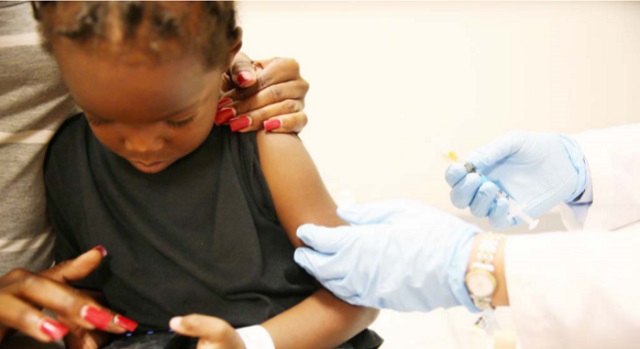
One disease or two?
Kampala, Uganda | THE INDEPENDENT | Uganda has conducted a mass measles-rubella and polio vaccination campaign between Oct.16-22.
Initially planned to be a five-day mass immunisation campaign but extended to seven days in selected areas, it used up to 20 million doses on the Measles-Rubella (MR) vaccine imported into the country in July and cost US$14.4 million (Approx.Shs53 billion). It was funded by the Government of Uganda, the GAVI, the Vaccine Alliance; the United Nations Children’s Fund, and WHO.
Immunisation was initially planned to be conducted in schools for the first three days and in communities for the last two days but it was extended in selected areas. It did not matter if the child was previously immunised or not. The measles-rubella vaccination is to become part of the national routine immunisation schedule, according Health minister Dr. Ruth Aceng.
But there has been marked criticism of the vaccination campaign despite repeated assurances by the Ministry of Health and the World health Organisation (WHO) that vaccines being used are approved, safe, free, and effective.
The target was to immunise more than 18 million children younger than 15 years, about 43% of the country’s population. Among them, 8.2 million children younger than five years were targeted to receive the oral polio vaccine.
According to the Ministry of Health, Uganda has experienced measles outbreaks across numerous districts in the past three years. Although the last reported case of polio in Uganda was in November 2010, the country remains under threat of the disease because of vaccine-derived strains of polio circulating in neighbouring countries.
The objective is to attain more than 95% immunisation coverage, which is needed to interrupt the transmission of measles, rubella and polio. Many district of Uganda; about 80%, according to the Ministry of Health, have not attained the immunization target. In a statement to the media, the Ministry said the low coverage is due to poor mobilsation, inadequate awareness, inadequate funding, vaccine stock-outs and lack of knowledge about measelea-rubella disease.
Rubella and measles
The WHO says Rubella – also called German measles or three-day measles, is an infection caused by a virus and is particularly dangerous for adolescents and pregnant women. When a woman is infected with the rubella virus early in pregnancy, she has a 90% chance of passing the virus to her unborn child. This can cause the death of the fetus or serious birth defects, such as deafness, blindness, and heart defects, known as Congenital Rubella Syndrome (CRS).
According to the Uganda Ministry of Health, review of the data from the Uganda Heart Institute shows an increasing burden of children born with heart disease as a result of rubella. Children who contract rubella experience rashes and low fever, with the disease sometimes associated with joint pains and a swelling of the lymph nodes.
Uganda is among the heavier sufferers of rubella and the WHO lists it among the top 10 most affected countries. Up to 59 districts or over 50% of the country have between 2016 and now reported cases of Rubella.
Other countries with high incidences are the Central African Republic and the Republic of Congo. According to the WHO, all three have not had rubella vaccination programs. Others that are heavily hit include Nigeria, Guinnea, Liberia, Tunisia, and South Africa. Elsewhere the most hit are Russia, Pakistan, and Poland.
Neighbours in the East African region, Kenya and Tanzania, have rubella vaccination programmes but Rwanda and Burundi do not have them, although the WHO data shows they have very low incidents of the disease.
Globally, over 400 children die every day due to measles and about 280 babies are born every day with congenital rubella syndrome (CRS).
Rubella is not the same as measles (rubeola), though the two illnesses do share some characteristics, including the rash. However, rubella is caused by a different virus than measles, and is neither as infectious nor usually as severe as measles.
Measles is highly contagious. The virus can be contracted by someone up to two hours after an infected person has left a room. It spreads through air and infects the respiratory tract, potentially killing malnourished children or babies too young to be vaccinated. Infection with measles is followed by high fever, rash that spreads over the body, cough, running nose and red watery eyes, with the disease weakening the body’s immune system. It also often leads to serious complications that include blindness, encephalitis, severe diarrhea and severe respiratory tract infections, such as pneumonia.
****
 The Independent Uganda: You get the Truth we Pay the Price
The Independent Uganda: You get the Truth we Pay the Price


